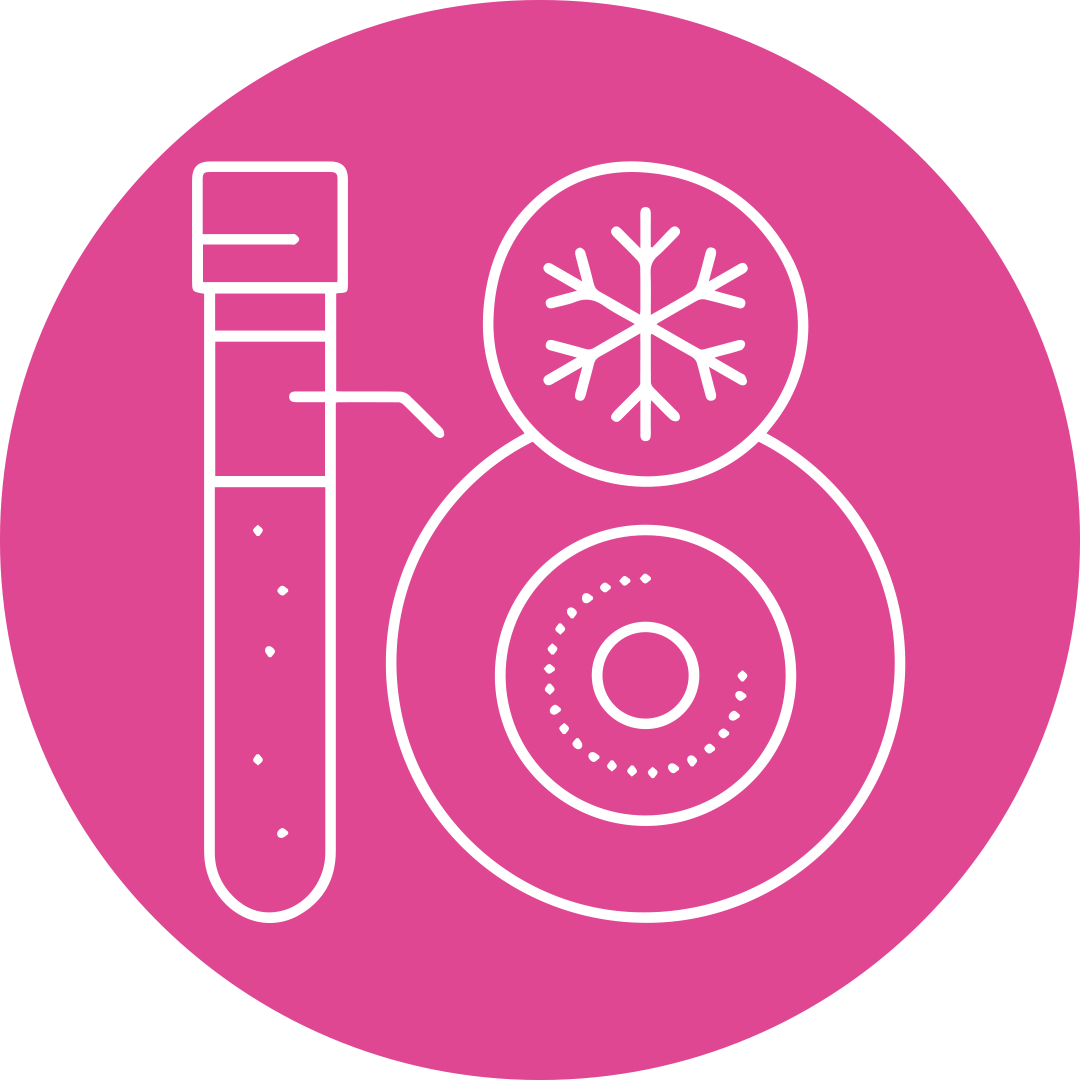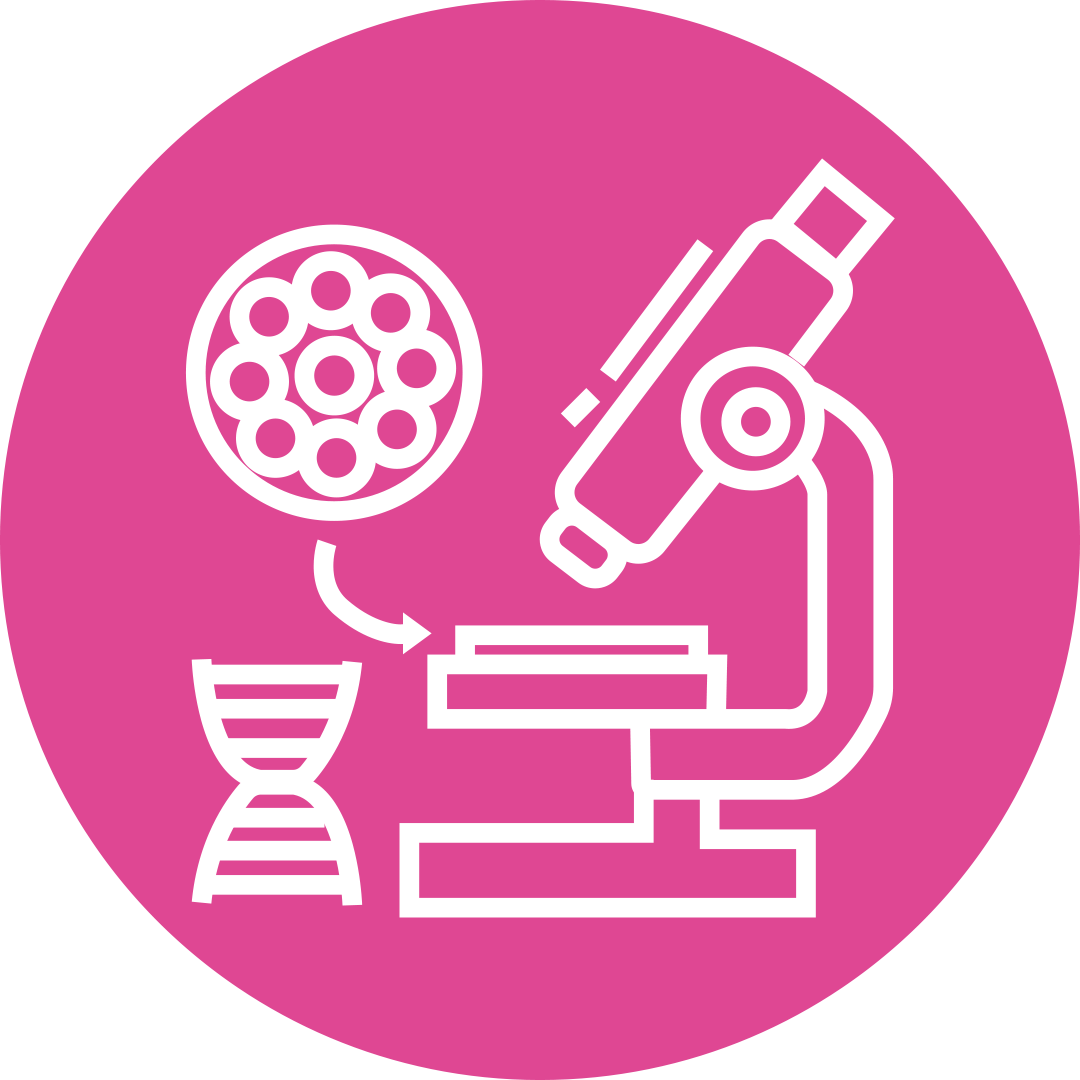IVF (In Vitro Fertilisation)
What is IVF?
IVF is In Vitro(Outside) Fertilisation. Eggs are removed from the ovaries and fertilised with sperm in the laboratory. The fertilised egg (embryo) is later placed in the woman’s womb.
Why IVF for me?
IVF as your best treatment option if:
- you have been diagnosed with unexplained infertility
- your tubes are blocked
- you have been unsuccessful with intra uterine insemination (IUI)
- there is a low sperm count
How does IVF work?
Steps as follows….
For women:
Step 1. Suppressing the natural monthly hormone cycleAs a first step of the IVF process you may be given a drug to suppress your natural cycle. Treatment is given either as a daily injection. This continues for about two weeks.
Step 2. Increasing the eggs: Fertility hormone called FSH. This is usually taken as a daily injection for around 12 days. This hormone will increase the number of eggs you produce .With more fertilised eggs, the clinic has a greater choice of embryos to use in your treatment.
Step 3. Progress with scan: Throughout the drug treatment, the clinic will monitor your progress. This is done by vaginal ultrasound scans and, possibly, blood tests. 34–38 hours before your eggs are due to be collected you have a hormone injection to help your eggs mature.
Step 4. Egg collection: In the IVF process eggs are usually collected by ultrasound guidance under sedation. This involves a needle being inserted into the scanning probe and into each ovary. The eggs are, in turn, collected through the needle.
Step 5. Creating Embryos: Your eggs are mixed with your husband’s or the donor’s sperm and cultured in the laboratory. They are then checked to see if any have fertilised. Those that have been fertilised (now called embryos) are grown in the laboratory incubator for 2 – 5 days before being retransferred. The best one, two or exceptionally three embryos will then be chosen for transfer.
Step 6. Embryo transfer: For women under the age of 40, one or two embryos can be transferred. If you are 40, or over, a maximum of three can be used.The number of embryos is restricted because of the risks associated with multiple births. Remaining embryos may be frozen for future IVF attempts, if they are suitable.
For Men:
Collecting sperm: Around the time your wife’s eggs are collected, you are asked to produce a fresh sample of sperm. This is stored for a short time before the sperm are washed and spun at a high speed. This is so the healthiest and most active sperm can be selected. If you are using donated sperm, it is removed from frozen storage, thawed and prepared in the same way.
FAQ's
IVF is a fertility treatment where eggs are retrieved from a woman’s ovaries and fertilised with sperm in a laboratory. The resulting embryo is then transferred into the woman’s womb to encourage pregnancy.
IVF may be your best option if you have unexplained infertility, blocked fallopian tubes, low sperm count, or if other treatments like intrauterine insemination (IUI) have been unsuccessful.
IVF involves several steps: suppressing the natural menstrual cycle, stimulating egg production, monitoring egg development, collecting eggs, fertilising the eggs, and transferring the embryo(s) into the womb.
The entire IVF process usually takes about 4 to 6 weeks from the first injection to the embryo transfer. The exact duration depends on individual responses to treatment and the fertility clinic’s protocols.
While some steps in the IVF process, like hormone injections and egg retrieval, may cause mild discomfort or cramping, the procedures are generally well-tolerated. Egg retrieval is done under sedation to minimise discomfort.
Eggs are retrieved using a fine needle, guided by ultrasound, that is inserted into each ovary. This procedure is done under sedation, and the eggs are collected for fertilisation.
After egg collection, the eggs are fertilised with sperm (from either a partner or a donor) in the laboratory. The fertilised eggs (now embryos) are cultured for 2-5 days before being transferred to the woman’s womb.
Yes, any healthy embryos not used during the initial transfer can be frozen for future IVF cycles. This allows you to attempt additional pregnancies later without repeating the full IVF process.
For women under 40, one or two embryos can be transferred per cycle. For women 40 and older, up to three embryos may be transferred, depending on your doctor’s advice and the risks associated with multiple births.
The success rates of IVF depend on several factors, including age, cause of infertility, and overall health. On average, success rates decrease as the woman’s age increases, with women under 35 having higher chances of success
Book Your Appointment
Visit Near By Hospital
Visakhapatnam
London IVF
KGH Down Rd, beside indus hospital, Besides Lepakshi Handicrafts, Maharani Peta, Visakhapatnam, Andhra Pradesh 530002
Contact
+91 8125841249
Kakinada
London IVF
1st Floor, Induslnd Bank, near by HP Petrol bunk, Nagamalli Thota, Ramanayapeta, Kakinada, Andhra Pradesh 533003, India
Contact
+91 7842535620
Rajahmundry
London IVF
Lakkakula Rama Rao St, Gandhipuram, Rajamahendravaram, Andhra Pradesh 533103, India
Contact
+91 9110552504
Vizianagaram
London IVF
London IVF Centre, Matham Veedhi, near Vijaya Medicals, Fort Area, Vizianagaram, Jammu Narayana Puram Rural, Andhra Pradesh 535002
Contact
+91 80080 80197
Tuni
London IVF
13-67, Main Rd, opp. Surya Mahal Theatre, Payakaraopeta, Tuni, Andhra Pradesh 531126
Contact
+91 99487 22703








